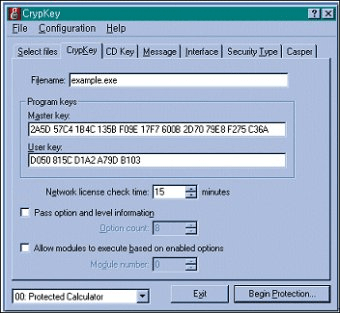
Check the results are consistent with causal contribution Combining qualitative and quantitative data Develop programme theory/theory of change Develop planning documents for the evaluation or M&E system Document management processes and agreements Define ethical and quality evaluation standards Rainbow Framework Rainbow Framework overview and downloads Toolsįor an overview of specialist tools for qualitative data analysis, see the CAQDAS site at the University of Surrey which compares ten packages including Atlas.Ti, HyperResearch and NVivo. On WISE, you can find WISE tutorials, WISE applets, excel downloads, teaching papers, quick guides, and publications.
#Hyperresearch key generator series
It is also home to a series of interactive, sequenced tutorials on key statistical concepts. WISE: Web Interface for Statistics Education: This website organises a large amount of statistics resources into one central place.
 Timelines and time-ordered matrices: aids analysis by allowing for visualisation of key events, sequences and results. It allows for sorting data across case and by theme. Framework matrices: a method for summarising and analysing qualitative data in a two-by-two matrix table. Thematic coding: recording or identifying passages of text or images that are linked by a common theme or idea allowing the indexation of text into categories. Content analysis: reducing large amounts of unstructured textual content into manageable data relevant to the (evaluation) research questions. Time series analysis: observing well-defined data items obtained through repeated measurements over time.Īnalysing words, either spoken or written, including questionnaire responses, interviews, and documents. Summary statistics: providing a quick summary of data which is particularly useful for comparing one project to another, before and after. Parametric inferential statistics: methods for inferring conclusions about a population from a sample's data that follows certain parameters: the data will be normal (ie, the distribution parallels the bell curve) numbers can be added, subtracted, multiplied and divided variances are equal when comparing two or more groups and the sample should be large and randomly selected. Non-Parametric inferential statistics: methods for inferring conclusions about a population from a sample's data that are flexible and do not follow a normal distribution (ie, the distribution does not parallel a bell curve), including ranking: the chi-square test, binomial test and Spearman's rank correlation coefficient. Multivariate descriptive: providing simple summaries of (large amounts of) information (or data) with two or more related variables. Measures of dispersion: a summary measure that provides information about how much variation there is in the data, including the range, inter-quartile range and the standard deviation.
Timelines and time-ordered matrices: aids analysis by allowing for visualisation of key events, sequences and results. It allows for sorting data across case and by theme. Framework matrices: a method for summarising and analysing qualitative data in a two-by-two matrix table. Thematic coding: recording or identifying passages of text or images that are linked by a common theme or idea allowing the indexation of text into categories. Content analysis: reducing large amounts of unstructured textual content into manageable data relevant to the (evaluation) research questions. Time series analysis: observing well-defined data items obtained through repeated measurements over time.Īnalysing words, either spoken or written, including questionnaire responses, interviews, and documents. Summary statistics: providing a quick summary of data which is particularly useful for comparing one project to another, before and after. Parametric inferential statistics: methods for inferring conclusions about a population from a sample's data that follows certain parameters: the data will be normal (ie, the distribution parallels the bell curve) numbers can be added, subtracted, multiplied and divided variances are equal when comparing two or more groups and the sample should be large and randomly selected. Non-Parametric inferential statistics: methods for inferring conclusions about a population from a sample's data that are flexible and do not follow a normal distribution (ie, the distribution does not parallel a bell curve), including ranking: the chi-square test, binomial test and Spearman's rank correlation coefficient. Multivariate descriptive: providing simple summaries of (large amounts of) information (or data) with two or more related variables. Measures of dispersion: a summary measure that provides information about how much variation there is in the data, including the range, inter-quartile range and the standard deviation. 
Each measure is useful for different conditions.
 Measures of central tendency: a summary measure that attempts to describe a whole set of data with a single value that represents the middle or centre of its distribution. The mean (the average value), median (the middle value) and mode (the most frequent value) are all measures of central tendency. Frequency tables: a visual way of summarizing nominal and ordinal data by displaying the count of observations (times a value of a variable occurred) in a table. Exploratory Techniques: taking a ‘first look’ at a dataset by summarising its main characteristics, often by using visual methods. Data mining: computer-driven automated techniques that run through large amounts of text or data to find new patterns and information. The frequencies of each are added in the intersecting squares and displayed as percentages of the whole, illustrating relationships in the data. In a simple crosstabulation, one variable occupies the horizontal axis and another the vertical.
Measures of central tendency: a summary measure that attempts to describe a whole set of data with a single value that represents the middle or centre of its distribution. The mean (the average value), median (the middle value) and mode (the most frequent value) are all measures of central tendency. Frequency tables: a visual way of summarizing nominal and ordinal data by displaying the count of observations (times a value of a variable occurred) in a table. Exploratory Techniques: taking a ‘first look’ at a dataset by summarising its main characteristics, often by using visual methods. Data mining: computer-driven automated techniques that run through large amounts of text or data to find new patterns and information. The frequencies of each are added in the intersecting squares and displayed as percentages of the whole, illustrating relationships in the data. In a simple crosstabulation, one variable occupies the horizontal axis and another the vertical.  Crosstabulations: using contingency tables of two or more dimensions to indicate the relationship between nominal (categorical) variables. Correlation: a statistical measure ranging from +1.0 to -1.0 that indicates how strongly two or more variables are related. A positive correlation (+1.0 to 0) indicates that two variables will either increase or decrease together, while a negative correlation (0 to -1.0) indicates that as one variable increases, the other will decrease. Analysing numeric data such as cost, frequency, physical characteristics.
Crosstabulations: using contingency tables of two or more dimensions to indicate the relationship between nominal (categorical) variables. Correlation: a statistical measure ranging from +1.0 to -1.0 that indicates how strongly two or more variables are related. A positive correlation (+1.0 to 0) indicates that two variables will either increase or decrease together, while a negative correlation (0 to -1.0) indicates that as one variable increases, the other will decrease. Analysing numeric data such as cost, frequency, physical characteristics.








 0 kommentar(er)
0 kommentar(er)
